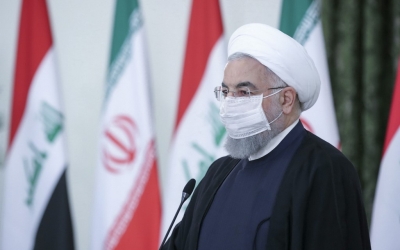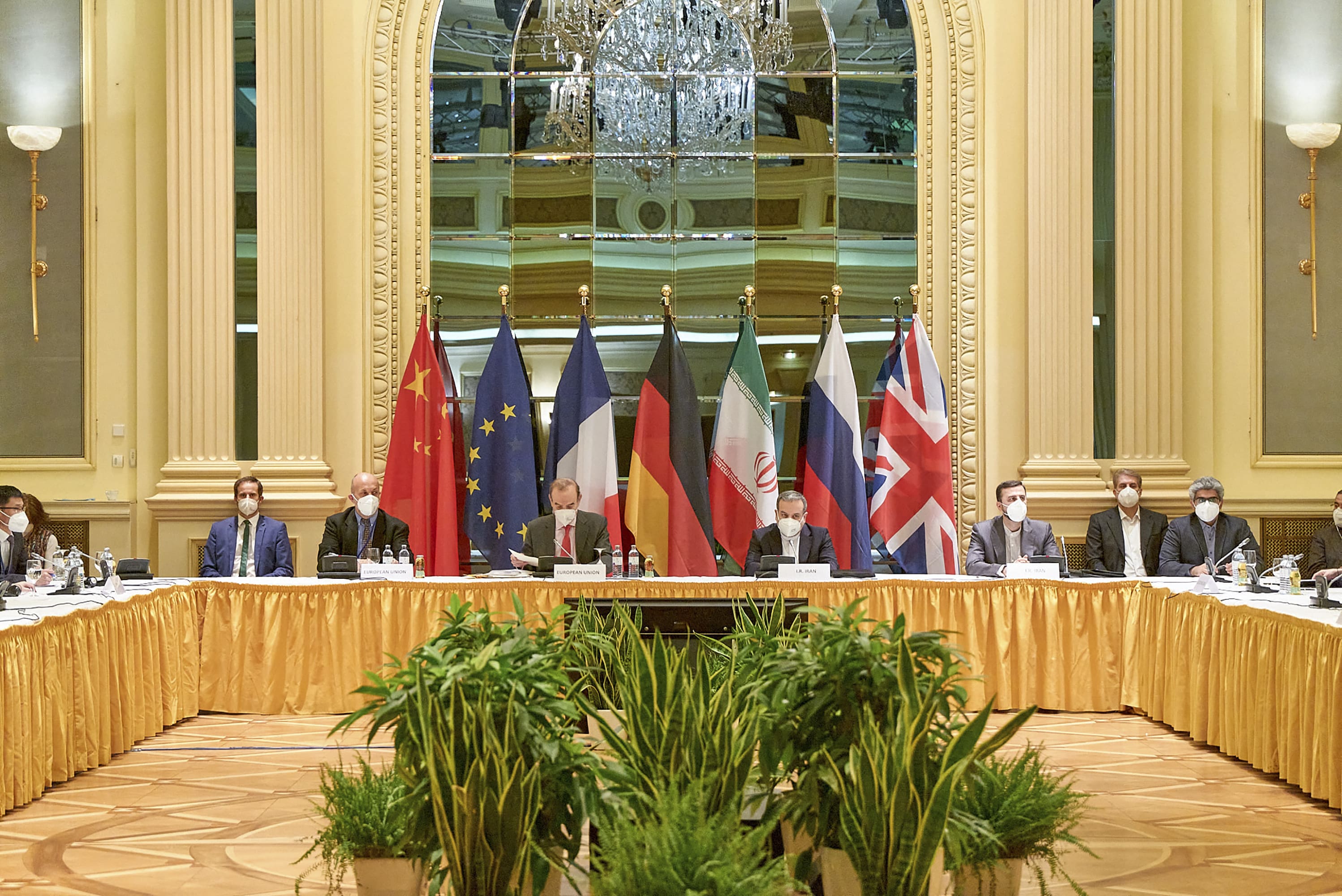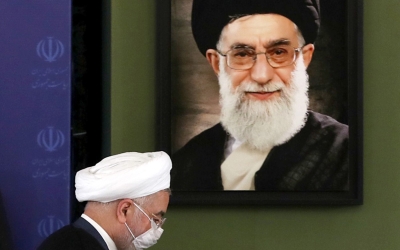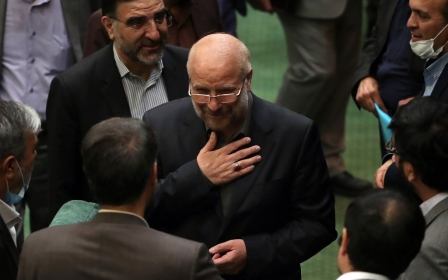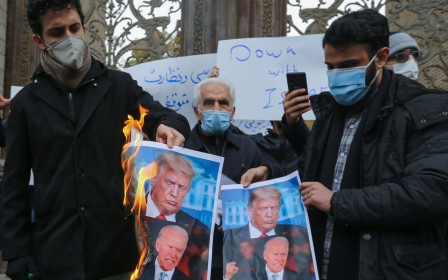Iran presidential election promises generational shift
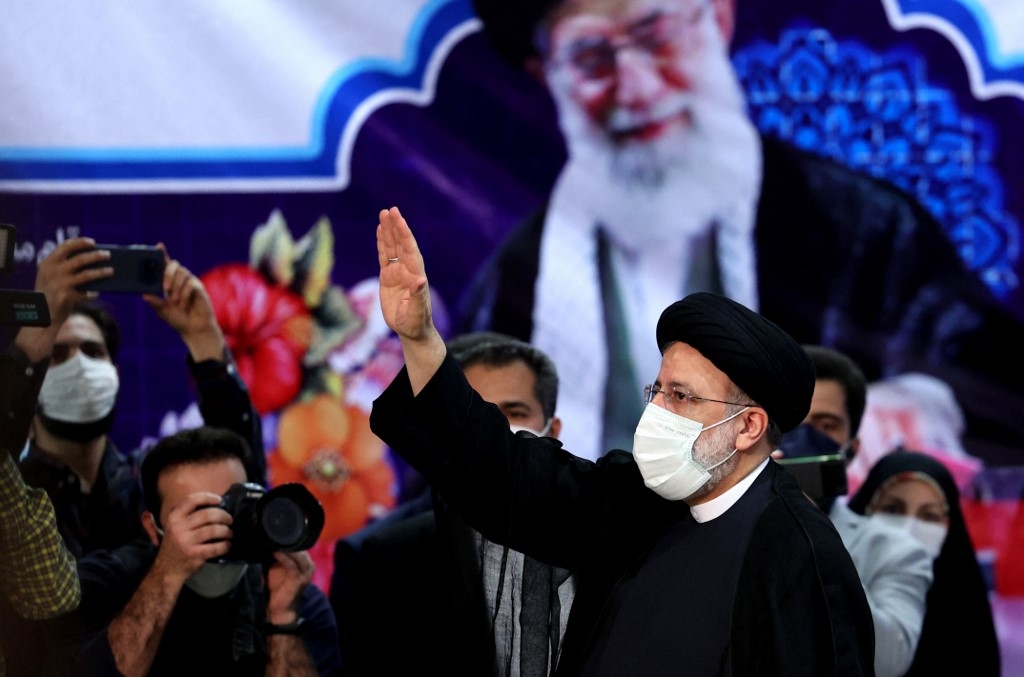
As Iran prepares to hold its 13th presidential election since 1980, there is no shortage of analysis on what this vote means and how it will play out. The general consensus appears to be that a “conservative” or hardliner will win, in keeping with the wishes of Iranian Supreme Leader Ayatollah Ali Khamenei.
On foreign policy, Iran's new president is likely to spring surprises, principally in the field of Iran-US relations
That assumption has gained traction since the Guardian Council – the body tasked with vetting candidates’ suitability for elections – disqualified leading contenders, including former president Mahmoud Ahmadinejad. But while a conservative, or indeed a hardliner, may very well win, that assumption misses the forest for the trees. The presidential election next month is far less about reformist versus principalist than it is about a general strategic reorientation by the country’s establishment.
The immediate outcome, and the subsequent performance of the new government, will reflect a desire to overcome 24 years of political volatility in Iran, beginning with the electoral victory of arch-reformist Mohammad Khatami in 1997.
Iran’s next president will not only set about streamlining the government bureaucracy with a view to making it more efficient; he will also most likely adopt a domestic socio-economic policy portfolio designed to create a new and sustainable national consensus around key issues, such as social justice and the terms and conditions of political participation.
On foreign policy, Iran’s new president is likely to spring surprises, principally in the field of Iran-US relations, which may well be placed on a more stable footing in the not-too-distant future.
New MEE newsletter: Jerusalem Dispatch
Sign up to get the latest insights and analysis on Israel-Palestine, alongside Turkey Unpacked and other MEE newsletters
Manageable volatility
Since 1997, the political scene in Iran has been marked by what can best be described as manageable volatility, with reformists and principalists relentlessly vying for control of the executive and legislature.
Khatami’s reformist administration was characterised by consistent over-promising and under-delivery. While this ushered in a more permissive cultural environment, those gains ultimately proved unsustainable.
The idiosyncratic principalist faction that took the reins of power in the summer of 2005 - dubbed the Iranian neoconservatives at the time - tried hard to re-establish an authentic revolutionary discourse after eight years of perceived ideological retreat. Led by the populist Mahmoud Ahmadinejad, this faction ultimately fell foul of the establishment in its second term (2009-2013), following a disputed presidential election that touched off unprecedented street protests and riots.
The Rouhani administration, which took power in 2013, was in essence a coalition between state-centric reformists and the old technocratic elites originally nurtured by former President Hashemi Rafsanjani. Like the more authentic reformists of the late 1990s and early 2000s, the Rouhani administration has also over-promised and under-delivered, especially in relation to the economy.
Guided by a neoliberal economic philosophy, President Hassan Rouhani’s administration has exacerbated some of the structural flaws and inequalities in Iran’s economy, which first came to the fore during the Rafsanjani presidency (1989-1997). The end result is that the Rouhani administration has not only isolated its core constituency, but much more worryingly, it has created a dangerous economic environment, hurting the weakest socioeconomic classes the most.
Dangerous vacuum
This dangerous vacuum came into sharp relief during the sudden petrol rationing and price hikes of November 2019, which sparked widespread rioting across the country. Punishing sanctions combined with economic mismanagement have generated concerns that the election next month will be met by voter apathy, a first in the Islamic Republic.
Traditionally, presidential elections have produced high voter turnouts in Iran. The last election in May 2017 produced a 70 percent turnout, which compares favourably with similar elections in western countries. Participation in the November 2020 US presidential election, for example, was only 66.9 percent - the highest voter turnout in 120 years.
A relatively low turnout in the Iranian parliamentary elections of February 2020 fuelled speculation that the presidential election would meet a similar low-key reception among the public. But this ignores the Iranian public’s seemingly special relationship with the presidential poll, which at key moments has produced unpredictable results.
This was most evident in the May 1997 presidential election, which brought reformists to power against all expectations, and again in the June 2005 election, which brought Ahmadinejad’s faction to power.
A distinctive feature of this year’s presidential race was the sheer number of prospective candidates who registered initially.
These included men with strong backgrounds in the Islamic Revolutionary Guards Corps (IRGC), notably Saeed Mohammad, the former commander of the Khatam al-Anbiya Construction Headquarters (KACH), the engineering arm of the Revolutionary Guards. Mohammad was disqualified from running by the Guardian Council, thus dispelling the myth that the system aspires to place an IRGC man at the presidential headquarters in Pasteur Street.
Another former KACH commander and former oil minister, Rostam Qassemi, also signed up for the presidential race only to later withdraw his candidacy in favour of Ebrahim Raisi, the main principalist contender.
Overcoming Iran's challenges
On the other side of the political spectrum, veteran reformist strategist Mostafa Tajzadeh, along with vice president and Rouhani loyalist Eshaq Jahangiri, also registered their candidacies, but they were both disqualified by the Guardian Council.
The disqualification of former Majlis speaker and arch-conservative, Ali Larijani, has further fuelled speculation that the election is designed to be uncompetitive, with a view to clearing the road for the leading candidate, judiciary chief Ebrahim Raisi.
But the lacklustre Larijani never stood a chance with the Iranian electorate due to his aloof persona and inability to engage the masses. Western think tanks with scant local knowledge and no real understanding of Iranian politics are at pains to establish a narrative based on the predetermination of the election’s outcome.
Only a government that is fully aligned with the country's establishment and the IRGC is capable of pulling off these feats in the foreign policy sphere
But this election is less about personalities than it is about strategy and policies. The successful candidate has to convince the country’s ruling establishment, and public opinion writ large, that he has what it takes to overcome the country’s challenges.
For his part, Ayatollah Khamenei has on numerous occasions called for a “young” and “Hezbollahi” government to take the reins of the country. That is not to say that the leader’s preference is for a young president - indeed, none of the cleared seven candidates are particularly young - but that the next president ought to consider bringing young and revolutionary elements to the fore, by giving them command of key executive branch portfolios.
As stated earlier, speculation in western literature that the next government is set to be dominated by hardliners and radicals is not only factually misleading, but more to the point, it risks missing the forest for the trees.
Nuclear negotiations
As set out in guidelines issued by the supreme leader, the next government must begin the difficult work of alleviating the country’s structural problems, with a view to effecting a generational shift in the country’s management. The institutional cohesion and psychological sense of purpose demanded by this difficult work augurs well for foreign policy, which in the past eight years has been a site for intense contestation between Rouhani-aligned reformists and centrists, and principalists.
The extent and severity of this internal battle came into sharp relief in the wake of a leaked audiotape, in which Foreign Minister Mohammad Javad Zarif complained of stiff competition with the IRGC Quds Force over foreign policy. The next government’s primary challenge in that regard is the revival of the nuclear deal, with talks ongoing in Vienna as the US and Iran negotiate indirectly via Russia, China, the UK, France and Germany.
The outgoing Rouhani administration appears anxious to secure a deal before it formally departs the arena in August, if only to secure its legacy as the government that originally negotiated the nuclear deal and kept it alive against all odds after the unilateral US withdrawal in May 2018, before finally renegotiating its revival.
But the next Iranian government will most likely take a dim view of the deal’s revival if it doesn’t satisfy Iran’s expectations, principally the verified lifting of key sanctions targeting the country’s energy and financial sectors. Iran may even come to the view that it can live without a comprehensive nuclear deal, opting instead for ad hoc arrangements with the International Atomic Energy Agency and world powers.
More united and confident
Beyond the nuclear deal, one of the next government’s pressing challenges will be to re-establish deterrence with Israel, following two Israeli sabotage operations against the Natanz uranium enrichment facility in the space of nine months, and the assassination of top nuclear scientist, Mohsen Fakhrizadeh, last November.
The pushback against Israel may start in Syria as Iran moves to consolidate its post-war gains against the backdrop of intense, but hitherto failing, Israeli attempts to roll back the Islamic Republic’s growing presence in the Levant. More broadly, Iran will also be seeking to re-establish deterrence with the US after the assassination of IRGC Quds Force commander Qassem Soleimani in January 2020.
The re-establishment of deterrence could potentially help to place Iran’s volatile relationship with the US on a more stable footing, as a more modified balance of power emerges in the West Asia region.
Only a government that is fully aligned with the country’s establishment and the IRGC is capable of pulling off these feats in the foreign policy sphere. The upshot is that the outside world will be facing a more united and confident Iranian establishment in the years ahead, and one that will enjoy more support from the public.
After 24 years of managed political volatility - characterised by controlled, and in some cases contrived, factional strife - public opinion in Iran is likely to respond positively to a government that prioritises real economic reform at home and the defence of the country’s prestige abroad.
The views expressed in this article belong to the author and do not necessarily reflect the editorial policy of Middle East Eye.
This article is available in French on Middle East Eye French edition.
Middle East Eye delivers independent and unrivalled coverage and analysis of the Middle East, North Africa and beyond. To learn more about republishing this content and the associated fees, please fill out this form. More about MEE can be found here.




